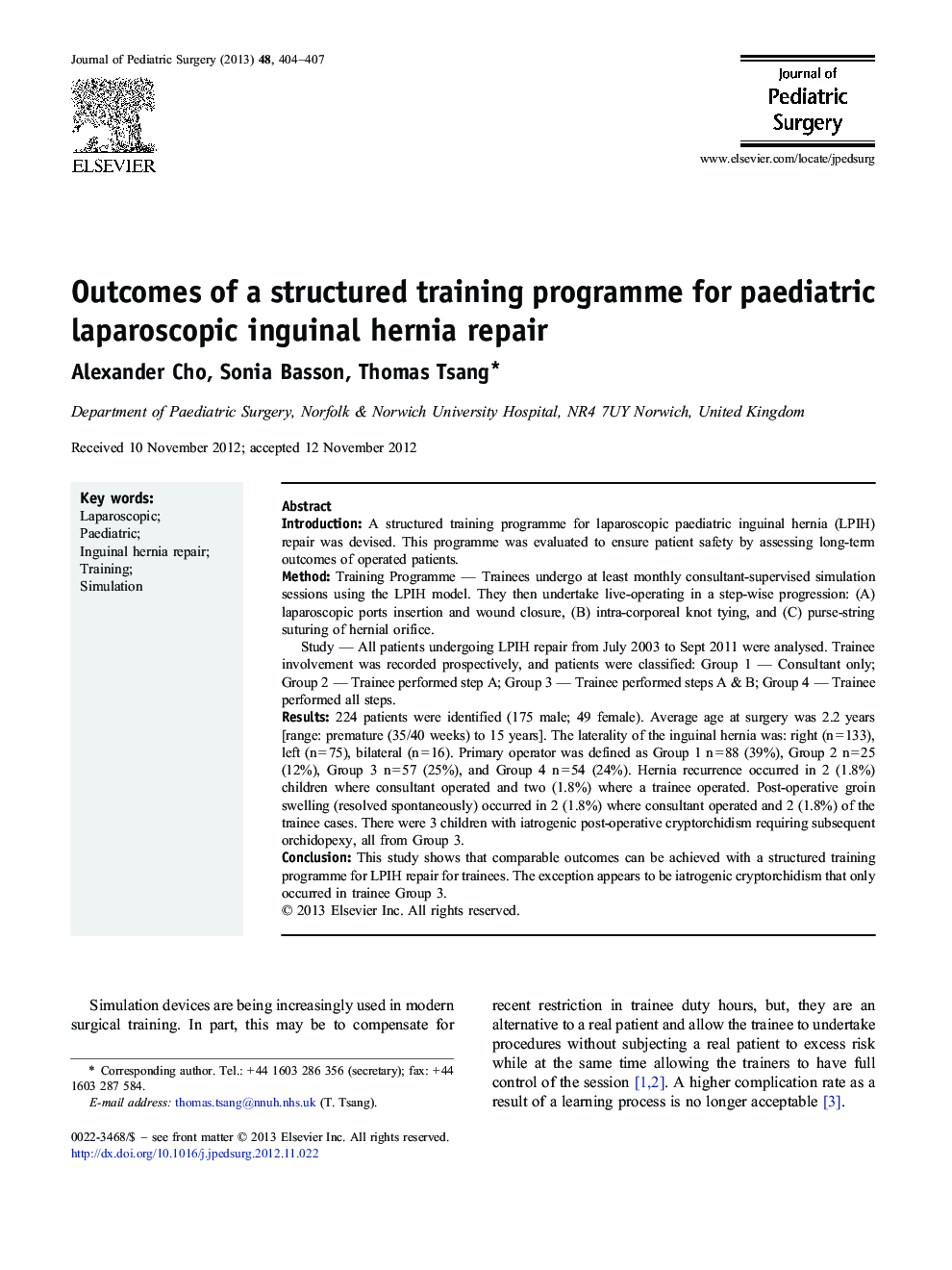| Article ID | Journal | Published Year | Pages | File Type |
|---|---|---|---|---|
| 4156261 | Journal of Pediatric Surgery | 2013 | 4 Pages |
IntroductionA structured training programme for laparoscopic paediatric inguinal hernia (LPIH) repair was devised. This programme was evaluated to ensure patient safety by assessing long-term outcomes of operated patients.MethodTraining Programme — Trainees undergo at least monthly consultant-supervised simulation sessions using the LPIH model. They then undertake live-operating in a step-wise progression: (A) laparoscopic ports insertion and wound closure, (B) intra-corporeal knot tying, and (C) purse-string suturing of hernial orifice.Study — All patients undergoing LPIH repair from July 2003 to Sept 2011 were analysed. Trainee involvement was recorded prospectively, and patients were classified: Group 1 — Consultant only; Group 2 — Trainee performed step A; Group 3 — Trainee performed steps A & B; Group 4 — Trainee performed all steps.Results224 patients were identified (175 male; 49 female). Average age at surgery was 2.2 years [range: premature (35/40 weeks) to 15 years]. The laterality of the inguinal hernia was: right (n = 133), left (n = 75), bilateral (n = 16). Primary operator was defined as Group 1 n = 88 (39%), Group 2 n = 25 (12%), Group 3 n = 57 (25%), and Group 4 n = 54 (24%). Hernia recurrence occurred in 2 (1.8%) children where consultant operated and two (1.8%) where a trainee operated. Post-operative groin swelling (resolved spontaneously) occurred in 2 (1.8%) where consultant operated and 2 (1.8%) of the trainee cases. There were 3 children with iatrogenic post-operative cryptorchidism requiring subsequent orchidopexy, all from Group 3.ConclusionThis study shows that comparable outcomes can be achieved with a structured training programme for LPIH repair for trainees. The exception appears to be iatrogenic cryptorchidism that only occurred in trainee Group 3.
